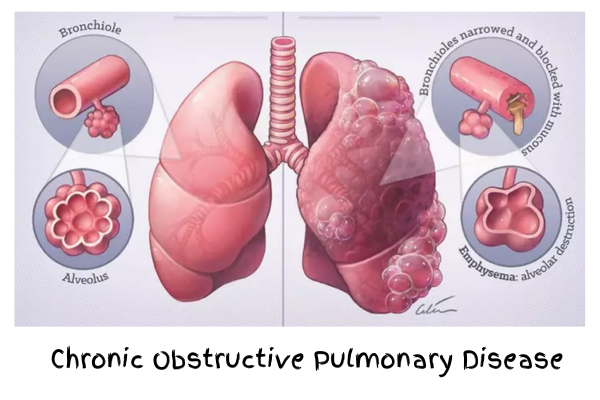Arts & Food
Fashion
Maintaining optimal health is a multifaceted endeavor that extends beyond occasional gym sessions or sporadic healthy meals. Achieving long-lasting wellness involves cultivating daily habits that foster both physical and mental well-being. On the Wellbeing Pro Tips website, we emphasize the importance of integrating consistent practices into your daily routine to enhance overall health. In this comprehensive guide, we’ll explore essential daily habits that can help you lead a healthier, more balanced life.
1. Start Your Day with Hydration
Water is fundamental to health, impacting everything from digestion to skin quality. Starting your day with a glass of water can jumpstart your metabolism, help flush out toxins, and keep you hydrated. Aim for at least 8 ounces first thing in the morning, and continue to drink water throughout the day. Adding a slice of lemon can provide a boost of vitamin C and enhance the detoxification process.
2. Incorporate a Balanced Breakfast
Breakfast is often touted as the most important meal of the day for good reason. A nutritious breakfast sets the tone for the day by providing essential nutrients and energy. Opt for a meal that includes a mix of protein, healthy fats, and complex carbohydrates. For example, a bowl of oatmeal topped with fresh berries and nuts, or a smoothie made with spinach, banana, and almond milk, can offer a balanced start.
3. Prioritize Regular Physical Activity
Exercise is a cornerstone of good health, offering benefits that extend beyond weight management. Regular physical activity improves cardiovascular health, boosts mood, and enhances cognitive function. Aim for at least 30 minutes of moderate exercise most days of the week. This could be a brisk walk, a cycling session, or a yoga practice. Incorporate a variety of activities to keep things interesting and engage different muscle groups.
4. Practice Mindful Eating
Mindful eating involves paying full attention to the experience of eating and drinking. It means savoring each bite, noticing the flavors and textures, and listening to your body’s hunger and fullness cues. This practice can prevent overeating and promote a healthier relationship with food. Avoid distractions like TV or smartphones during meals to fully engage in the eating experience.
5. Get Quality Sleep
Sleep is vital for overall health and well-being. It allows the body to repair and rejuvenate, supports immune function, and enhances cognitive performance. Aim for 7-9 hours of quality sleep each night. Create a restful sleep environment by maintaining a consistent sleep schedule, keeping the bedroom cool and dark, and avoiding caffeine or heavy meals close to bedtime.
6. Engage in Stress-Reduction Techniques
Chronic stress can have detrimental effects on both physical and mental health. Incorporating stress-reduction techniques into your daily routine can help manage stress levels and promote relaxation. Practices such as deep breathing exercises, meditation, or progressive muscle relaxation can be effective. Finding activities that you enjoy, such as reading or gardening, can also help alleviate stress.
7. Foster Social Connections
Human beings are inherently social creatures, and maintaining strong social connections is crucial for emotional health. Regular interactions with friends, family, or community groups can provide support, reduce feelings of loneliness, and improve overall well-being. Make time for social activities, whether through in-person meetings or virtual connections, to nurture these important relationships.
8. Practice Good Hygiene
Good hygiene practices are essential for preventing illness and maintaining overall health. This includes regular handwashing, brushing and flossing your teeth, and keeping your living spaces clean. Incorporate a routine that includes showering daily, changing into clean clothes, and maintaining personal grooming to support your overall hygiene.
9. Stay Mentally Active
Mental stimulation is important for cognitive health and can help delay age-related decline. Engage in activities that challenge your brain, such as puzzles, reading, or learning a new skill. Staying mentally active not only keeps your mind sharp but can also contribute to a greater sense of accomplishment and fulfillment.
10. Limit Screen Time
Excessive screen time can negatively impact both physical and mental health. Prolonged exposure to screens can lead to eye strain, poor posture, and disrupted sleep patterns. Aim to take regular breaks from screens, practice the 20-20-20 rule (every 20 minutes, look at something 20 feet away for 20 seconds), and set boundaries for recreational screen use to maintain a healthy balance.
11. Maintain a Healthy Weight
Maintaining a healthy weight is crucial for reducing the risk of chronic diseases such as diabetes, heart disease, and certain cancers. Adopt a balanced diet and regular exercise routine to manage weight effectively. It’s important to focus on overall health rather than just numbers on the scale, and to seek support from healthcare professionals if needed.
12. Practice Gratitude
Cultivating a sense of gratitude can have a profound impact on mental and emotional health. Taking time each day to reflect on positive aspects of your life can improve mood, increase resilience, and foster a more optimistic outlook. Consider keeping a gratitude journal where you record things you’re thankful for, or take a moment each day to appreciate the small joys in your life.
13. Set Realistic Goals
Setting realistic and achievable goals can provide direction and motivation for personal growth. Whether it’s related to health, career, or personal development, setting clear goals helps you stay focused and measure progress. Break larger goals into smaller, manageable steps, and celebrate your accomplishments along the way to maintain motivation and confidence.
14. Avoid Excessive Alcohol and Smoking
Minimizing the consumption of alcohol and avoiding smoking are key components of maintaining good health. Excessive alcohol intake can lead to liver damage, heart problems, and other health issues, while smoking is a major risk factor for numerous diseases, including cancer and respiratory conditions. Aim to limit alcohol consumption to moderate levels and avoid smoking or using tobacco products altogether.
15. Stay Hydrated Throughout the Day
In addition to starting your day with water, maintaining hydration throughout the day is crucial. Carry a reusable water bottle and sip regularly to keep your body hydrated. Proper hydration supports digestion, circulation, and temperature regulation, and can also improve skin health and energy levels.
Conclusion
Adopting daily habits that support overall health and well-being is a powerful way to enhance your quality of life. By integrating practices such as proper hydration, balanced nutrition, regular exercise, and stress management into your routine, you can create a solid foundation for long-term wellness. Remember, the key to achieving and maintaining good health lies in consistency and commitment to these daily habits.
At Wellbeing Pro Tips, we believe that small, positive changes can lead to significant improvements in your health and happiness. By embracing these daily habits, you’re taking proactive steps toward a healthier, more fulfilling life. Start today, and experience the benefits of a well-rounded approach to wellness. For more Visit Tiktok, Twitter, and Pinterest.
In the ever-evolving world of health and wellness, finding a product that aligns with both your nutritional goals and your taste buds can be a game-changer. Enter the Slender FX™ True Keto Strawberry Crème Shake—a product that has quickly garnered attention in the ketogenic community for its delicious flavor and potential benefits. In this article, we’ll dive deep into what makes this shake a standout choice for those pursuing a keto lifestyle, exploring its ingredients, benefits, and why it might just be the perfect addition to your daily regimen.
What is Slender FX™ True Keto Strawberry Crème Shake?
Slender FX™ True Keto Strawberry Crème Shake is a specially formulated meal replacement shake designed to support those following a ketogenic diet. The ketogenic diet is known for its emphasis on high-fat, moderate-protein, and very low-carb intake to encourage the body to enter a state of ketosis, where it burns fat for energy instead of carbohydrates.
This shake is not just another protein supplement; it’s crafted to align with keto dietary principles while offering a satisfying and tasty way to maintain nutritional balance. With a delightful strawberry crème flavor, it promises to be both an enjoyable and convenient option for those on the go.
Key Ingredients and Nutritional Profile
The effectiveness of any meal replacement shake depends largely on its ingredient list and nutritional profile. Here’s a closer look at what goes into Slender FX™ True Keto Strawberry Crème Shake:
- High-Quality Protein: The shake contains a blend of high-quality proteins, including whey protein isolate. Whey protein is known for its rapid absorption and complete amino acid profile, which supports muscle repair and growth. This makes it an excellent choice for those who are active or looking to build lean muscle.
- Healthy Fats: Adhering to the ketogenic diet’s focus on fats, this shake incorporates healthy fat sources such as MCT (medium-chain triglycerides) oil. MCTs are known for their quick conversion into ketones, providing an efficient energy source that supports ketosis and enhances mental clarity.
- Low Carbohydrates: With a keto diet’s primary objective being to keep carb intake very low, this shake is designed with minimal carbohydrates, ensuring it doesn’t interfere with the body’s state of ketosis. The shake often contains less than 5 grams of net carbs per serving, which aligns well with ketogenic guidelines.
- Fiber: To support digestive health and promote a feeling of fullness, the shake includes dietary fiber. Fiber is crucial in any diet but particularly important on a keto diet to prevent constipation and maintain regular bowel movements.
- Natural Flavors and Sweeteners: To ensure the shake remains low in carbs, it uses natural sweeteners such as stevia or erythritol, which don’t impact blood sugar levels. The strawberry crème flavor is achieved through natural flavoring, avoiding artificial additives that could detract from the health benefits.
Benefits of Slender FX™ True Keto Strawberry Crème Shake
1. Supports Ketosis: The primary benefit of the Slender FX™ True Keto Strawberry Crème Shake is its ability to support and maintain ketosis. By providing a high-fat, moderate-protein, and low-carb profile, it aligns perfectly with the macronutrient ratios needed for the body to remain in a state of ketosis.
2. Convenient Meal Replacement: For those with a busy lifestyle, preparing keto-friendly meals can sometimes be challenging. This shake offers a quick and convenient solution for breakfast, lunch, or even a snack. Simply mix with water or your preferred keto-friendly milk alternative, and you have a nutritious meal ready in seconds.
3. Delicious Taste: One of the standout features of this shake is its flavor. Many meal replacement shakes can be bland or overly artificial, but the Slender FX™ True Keto Strawberry Crème Shake is designed to be a treat for your taste buds. The rich strawberry crème flavor makes it a pleasant addition to your diet, ensuring you look forward to your shake rather than viewing it as a chore.
4. Supports Weight Management: The combination of high-quality protein, healthy fats, and fiber helps in promoting satiety. This means you’re less likely to experience hunger pangs between meals, which can aid in weight management by reducing the likelihood of unhealthy snacking.
5. Nutrient-Dense: Besides macronutrients, the shake often includes vitamins and minerals to ensure you’re getting essential nutrients despite the restrictive nature of a keto diet. This nutrient density is crucial for overall health and well-being, especially when dietary choices are limited.
How to Incorporate Slender FX™ True Keto Strawberry Crème Shake into Your Routine
Integrating the Slender FX™ True Keto Strawberry Crème Shake into your daily routine can be both simple and versatile. Here are a few tips and ideas to get the most out of this shake:
1. Breakfast Boost: Start your day on the right foot by having a shake for breakfast. It’s a quick and easy option that provides lasting energy and keeps you full until your next meal.
2. Post-Workout Recovery: After an intense workout, your body needs protein and healthy fats to recover. The Slender FX™ True Keto Strawberry Crème Shake provides the nutrients necessary for muscle repair and energy replenishment.
3. Meal Replacement: When you’re on the go or don’t have time to prepare a full meal, this shake serves as an excellent meal replacement. It’s especially useful for busy professionals, students, or anyone with a hectic schedule.
4. Delicious Dessert: Transform your shake into a decadent dessert by blending it with ice and a splash of keto-friendly milk. You can even add a few strawberries or a sprinkle of nuts for added texture and flavor.
5. Snack Time: If you’re feeling hungry between meals, a shake can help curb your appetite and provide a satisfying snack without derailing your keto goals.
Potential Considerations
While the Slender FX™ True Keto Strawberry Crème Shake is a fantastic option for many, it’s essential to consider a few factors before incorporating it into your diet:
**1. Personal Health Goals: Assess how this shake fits into your overall health goals and dietary needs. If you have specific medical conditions or dietary restrictions, consulting with a healthcare professional or nutritionist is always a good idea.
**2. Allergies and Sensitivities: Check the ingredient list for any potential allergens or sensitivities. While the shake is designed to be suitable for most people, individual responses can vary.
**3. Balance and Variety: Although meal replacement shakes can be convenient, they should complement a balanced diet rather than replace whole foods entirely. Ensure you’re also consuming a variety of nutrient-dense foods to meet all your dietary needs.
Conclusion
The Slender FX™ True Keto Strawberry Crème Shake offers a delightful and effective solution for those committed to a ketogenic lifestyle. With its carefully chosen ingredients, appealing flavor, and numerous benefits, it stands out as a valuable addition to any keto regimen. Whether you’re seeking a convenient meal replacement, a post-workout recovery option, or simply a tasty treat, this shake is designed to meet those needs while supporting your journey towards better health and wellness. Browse Zestynutritional and enjoy the delicious taste of strawberry crème while achieving your health and fitness goals with Slender FX True Keto Strawberry Créme Shake. For more visit our Facebook and Instagram pages.
Chronic Obstructive Pulmonary Disease (COPD) is a prevalent and debilitating condition that affects millions of people worldwide, with a significant impact on quality of life and public health systems. This progressive lung disease encompasses conditions such as chronic bronchitis and emphysema, characterized by airflow obstruction and breathing difficulties. In this comprehensive guide, we will explore the causes, symptoms, diagnosis, treatment, and management of COPD.
What is Chronic Obstructive Pulmonary Disease (COPD)?
COPD is a group of progressive lung diseases that obstruct airflow from the lungs, making it difficult to breathe. The primary forms of COPD are:
- Chronic Bronchitis: This involves long-term inflammation of the bronchial tubes, which leads to excessive mucus production and a persistent cough.
- Emphysema: This condition involves damage to the alveoli (air sacs) in the lungs, reducing the surface area available for gas exchange and making it difficult to expel air.
Causes and Risk Factors
The primary cause of COPD is long-term exposure to harmful substances that damage the lungs and airways. Key causes and risk factors include:
- Smoking: Tobacco smoke is the leading cause of COPD. The harmful chemicals in cigarettes damage the lung tissues and airways, leading to inflammation and obstruction. Smokers are at a significantly higher risk of developing COPD compared to non-smokers.
- Environmental Pollutants: Long-term exposure to air pollution, industrial fumes, and dust can contribute to the development of COPD. Individuals working in certain occupational settings, such as coal mining or construction, may be at higher risk.
- Genetic Factors: Alpha-1 antitrypsin deficiency, a rare genetic condition, can increase the risk of developing COPD. This deficiency leads to a lack of a protein that protects the lungs from damage.
- Respiratory Infections: Frequent respiratory infections during childhood can contribute to the development of COPD later in life.
- Age and Gender: COPD is more common in older adults, as lung function naturally declines with age. Historically, it was more common in men, but the incidence in women has increased due to rising smoking rates among women.
Symptoms of COPD
COPD symptoms can vary in severity and may worsen over time. Common symptoms include:
- Chronic Cough: A persistent cough that may produce mucus, often described as a “smoker’s cough.”
- Shortness of Breath: Difficulty breathing, especially during physical activities. As the disease progresses, shortness of breath can occur even at rest.
- Wheezing: A high-pitched whistling sound when breathing, particularly during exhalation.
- Chest Tightness: A sensation of pressure or tightness in the chest.
- Frequent Respiratory Infections: Increased susceptibility to colds, flu, and pneumonia.
Diagnosis of COPD
Diagnosing COPD involves a combination of clinical evaluation, medical history, and diagnostic tests:
- Medical History and Symptoms: A thorough review of symptoms, smoking history, and exposure to risk factors is essential for diagnosis.
- Physical Examination: A healthcare provider will listen to the lungs with a stethoscope to detect abnormal sounds such as wheezing or crackles.
- Spirometry: This pulmonary function test measures lung capacity and airflow. It is crucial for diagnosing COPD and assessing its severity. Spirometry tests the amount of air a person can exhale forcefully after taking a deep breath, known as Forced Expiratory Volume (FEV1), and the total amount of air exhaled, known as Forced Vital Capacity (FVC).
- Chest X-Ray: Imaging can help rule out other conditions and assess lung damage.
- CT Scan: A high-resolution CT scan can provide detailed images of the lungs and help in diagnosing emphysema.
- Arterial Blood Gas (ABG) Test: This test measures the levels of oxygen and carbon dioxide in the blood, which can indicate how well the lungs are functioning.
Management and Treatment of COPD
While COPD is a chronic and progressive disease with no cure, effective management can help alleviate symptoms, improve quality of life, and slow the progression of the disease. Key management strategies include:
- Smoking Cessation: Quitting smoking is the most crucial step in managing COPD. It helps slow the progression of the disease and reduces the risk of complications. Support from healthcare professionals, smoking cessation programs, and medications can assist in quitting.
- Medications:
- Bronchodilators: These medications help relax and open the airways, making breathing easier. They are available in short-acting and long-acting forms.
- Inhaled Corticosteroids: These reduce inflammation in the airways and can help control symptoms in more severe cases of COPD.
- Combination Inhalers: These combine bronchodilators and corticosteroids for more effective management.
- Phosphodiesterase-4 Inhibitors: These medications reduce inflammation and relax the airways, often used in severe cases.
- Antibiotics: Used to treat acute exacerbations caused by bacterial infections.
- Oxygen Therapy: For individuals with low blood oxygen levels, supplemental oxygen may be required. This therapy can improve oxygenation and reduce symptoms of breathlessness.
- Pulmonary Rehabilitation: This is a structured program that includes exercise training, education on managing COPD, and support to improve overall physical fitness and quality of life. It can help individuals become more active and manage symptoms better.
- Lifestyle Changes:
- Exercise: Regular physical activity can improve overall fitness, strengthen respiratory muscles, and enhance endurance.
- Healthy Diet: A balanced diet supports overall health and can help maintain a healthy weight, which is important for managing COPD.
- Avoiding Respiratory Irritants: Minimizing exposure to air pollutants, dust, and allergens can help reduce symptoms.
- Vaccinations: Regular vaccinations for influenza and pneumococcal pneumonia are recommended to reduce the risk of respiratory infections that can exacerbate COPD symptoms.
- Surgical Options: In severe cases, surgical interventions such as lung volume reduction surgery or lung transplantation may be considered. These options are usually reserved for individuals who have not responded well to other treatments.
Living with COPD
Managing COPD requires a proactive approach to health and a strong partnership with healthcare providers. Key strategies for living well with COPD include:
- Education and Self-Management: Understanding the disease, its progression, and how to manage symptoms effectively empowers individuals to take control of their health.
- Support Networks: Engaging with support groups, both online and in-person, can provide emotional support, practical advice, and motivation.
- Regular Monitoring: Regular check-ups with healthcare providers to monitor lung function, adjust medications, and address any complications.
Conclusion
Chronic Obstructive Pulmonary Disease (COPD) is a significant and growing public health concern, with a profound impact on individuals’ lives. While there is no cure for COPD, early diagnosis and comprehensive management can help control symptoms, improve quality of life, and slow disease progression. Smoking cessation, medications, lifestyle changes, and ongoing medical care are crucial components of an effective COPD management plan.
If you or someone you know is experiencing symptoms of COPD or is at risk, seek advice from a healthcare professional for a thorough evaluation and personalized treatment plan. Early intervention and effective management are key to maintaining respiratory health and enhancing overall well-being.For more Visit Our Website, Tiktok, Twitter, and Pinterest.
Gastrointestinal (GI) disorders are a major concern affecting millions of people worldwide. These disorders impact the digestive system, which includes organs like the esophagus, stomach, small intestine, large intestine, and rectum. In this detailed guide, we will explore common gastrointestinal disorders, their causes, symptoms, and effective management strategies to improve your digestive health.
What Are Gastrointestinal Disorders?
Gastrointestinal disorders refer to a range of conditions that affect the digestive tract. This includes the esophagus, stomach, small intestine, large intestine (colon), and rectum. These disorders can be acute or chronic, varying from mild discomfort to severe, life-altering conditions. Understanding these disorders is crucial for effective treatment and improved quality of life.
Common Gastrointestinal Disorders
- Gastroesophageal Reflux Disease (GERD)
- Overview: GERD is a chronic digestive condition where stomach acid frequently leaks into the esophagus, causing irritation. It is a common form of acid reflux.
- Symptoms: Key symptoms include heartburn, regurgitation, chest pain, and difficulty swallowing. GERD can also cause a chronic cough or sore throat.
- Management: Treatment often includes lifestyle changes such as avoiding trigger foods, losing weight, and elevating the head while sleeping. Medications like antacids, H2-receptor antagonists, and proton pump inhibitors may also be recommended.
- Irritable Bowel Syndrome (IBS)
- Overview: IBS is a functional GI disorder characterized by abdominal pain, bloating, and changes in bowel habits without an identifiable structural abnormality.
- Symptoms: Symptoms include cramping, diarrhea, constipation, or alternating between both. Stress and specific foods can worsen symptoms.
- Management: Managing IBS involves dietary adjustments, stress management, and medications. A low FODMAP diet can help reduce symptoms by limiting certain fermentable carbohydrates.
- Inflammatory Bowel Disease (IBD)
- Overview: IBD encompasses chronic inflammatory conditions of the digestive tract, including Crohn’s disease and ulcerative colitis.
- Symptoms: Symptoms of IBD can include abdominal pain, diarrhea (often bloody), weight loss, and fatigue. Crohn’s disease can affect any part of the GI tract, while ulcerative colitis primarily affects the colon and rectum.
- Management: Treatment includes medications to reduce inflammation and manage symptoms, dietary changes, and possibly surgery for severe cases. Biologics and immunosuppressants may be used for more advanced cases.
- Peptic Ulcer Disease (PUD)
- Overview: Peptic ulcers are sores that develop on the lining of the stomach, small intestine, or esophagus, often caused by Helicobacter pylori infection or long-term NSAID use.
- Symptoms: Symptoms include burning stomach pain, bloating, and nausea. Pain typically worsens when the stomach is empty.
- Management: Treatment includes antibiotics to eliminate H. pylori and medications like proton pump inhibitors or H2-receptor antagonists to reduce stomach acid. Avoiding NSAIDs and alcohol can also be beneficial.
- Celiac Disease
- Overview: Celiac disease is an autoimmune disorder triggered by the ingestion of gluten, which causes inflammation and damage to the small intestine lining.
- Symptoms: Symptoms can include diarrhea, abdominal pain, bloating, and weight loss. Some individuals may experience non-GI symptoms like anemia or skin rashes.
- Management: The primary treatment is a strict, lifelong gluten-free diet. Avoiding gluten helps heal the intestinal lining and alleviate symptoms.
- Diverticulitis
- Overview: Diverticulitis occurs when small pouches (diverticula) in the colon become inflamed or infected. It is often associated with diverticulosis.
- Symptoms: Symptoms include abdominal pain, fever, and changes in bowel habits, with pain typically located in the lower left abdomen.
- Management: Treatment may involve antibiotics, a liquid diet to rest the colon, and pain relief. Severe cases may require surgery.
- Gallstones
- Overview: Gallstones are solid particles that form in the gallbladder and can block bile ducts, leading to inflammation or infection.
- Symptoms: Symptoms include sudden, intense pain in the upper right abdomen, nausea, vomiting, and fever. Some individuals may have “silent” gallstones without symptoms.
- Management: Treatment options include medications to dissolve gallstones or cholecystectomy (surgical removal of the gallbladder) in severe cases.
Causes of Gastrointestinal Disorders
- Genetic Factors: Some GI disorders have a genetic component, such as celiac disease and certain types of IBD.
- Lifestyle Factors: Poor diet, smoking, excessive alcohol consumption, and high stress levels can contribute to GI disorders.
- Infections: Bacterial, viral, or parasitic infections can lead to or exacerbate GI conditions, such as peptic ulcers and gastroenteritis.
- Autoimmune Responses: Conditions like celiac disease and IBD involve abnormal immune responses affecting the digestive system.
- Medications: Long-term use of certain medications, such as NSAIDs, can cause or worsen GI issues like ulcers and bleeding.
Diagnosis and Treatment
Effective diagnosis of gastrointestinal disorders often involves:
- Endoscopy: A procedure using a flexible tube with a camera to examine the digestive tract.
- Colonoscopy: A specific endoscopy for inspecting the colon.
- Imaging: Techniques like ultrasound, CT scans, or MRI to visualize internal structures.
- Blood Tests: To identify markers of inflammation, infection, or nutrient deficiencies.
Treatment approaches for gastrointestinal disorders may include:
- Medications: To alleviate symptoms, reduce inflammation, or treat infections.
- Dietary Changes: Adapting your diet to avoid triggers and manage symptoms.
- Surgery: For severe cases or when other treatments fail.
- Lifestyle Modifications: Incorporating stress management, regular exercise, and avoiding harmful substances.
Living with Gastrointestinal Disorders
Managing a gastrointestinal disorder often requires a holistic approach involving healthcare professionals, dietitians, and possibly mental health support. Regular medical check-ups and adherence to treatment plans are crucial for effective management.
Conclusion
Gastrointestinal disorders can significantly impact your health and daily life. Understanding these conditions, their causes, symptoms, and treatment options is essential for effective management and improved digestive health. By combining medical treatment, lifestyle adjustments, and proactive health measures, individuals can better manage gastrointestinal disorders and enhance their overall well-being.
If you experience persistent GI symptoms or suspect a gastrointestinal disorder, consult with a healthcare provider for a thorough evaluation and personalized treatment plan. Early intervention and appropriate management are key to alleviating symptoms and maintaining optimal digestive health. For more Visit Our Website, Tiktok, Twitter, and Pinterest.
Obesity is a growing health concern in the UK, characterized by excessive body fat that poses serious health risks. As the prevalence of obesity continues to rise, understanding its causes, consequences, and potential solutions becomes crucial. This article explores the key aspects of obesity and offers actionable insights for addressing this pressing issue.
What is Obesity?
Obesity is defined by a Body Mass Index (BMI) of 30 or higher. BMI is a measure of body fat based on height and weight. While it provides a general indication of body fat, it doesn’t distinguish between muscle and fat or account for fat distribution. Despite these limitations, BMI remains a widely used tool for assessing obesity on a population level.
Causes of Obesity
- Genetic Factors: Genetics play a role in determining how the body stores and processes fat. Certain genetic variations can make individuals more susceptible to weight gain. However, genetics alone do not explain the current obesity epidemic.
- Environmental Influences: The modern environment is increasingly obesogenic. Sedentary lifestyles, characterized by prolonged sitting and minimal physical activity, contribute significantly to weight gain. Additionally, the easy availability of high-calorie, low-nutrient foods exacerbates the problem.
- Dietary Habits: Diets high in processed foods, sugary beverages, and unhealthy fats are major contributors to obesity. Consuming more calories than the body needs, coupled with inadequate physical activity, leads to an imbalance and weight gain.
- Socioeconomic Factors: Socioeconomic status impacts obesity rates. Lower-income individuals often have limited access to healthy foods and safe environments for physical activity. Food deserts—areas with limited access to nutritious food—are prevalent in many regions, contributing to poor dietary habits.
- Psychological Factors: Emotional stress, depression, and anxiety can lead to overeating or unhealthy eating patterns. Food can become a coping mechanism, and stress can disrupt hormones that regulate hunger and fat storage.
- Biological Mechanisms: Hormonal and metabolic factors also influence obesity. Imbalances in hormones such as leptin and ghrelin, which regulate appetite and satiety, can disrupt normal eating patterns and contribute to weight gain.
Consequences of Obesity
- Chronic Diseases: Obesity significantly increases the risk of developing chronic diseases, including type 2 diabetes, cardiovascular disease, hypertension, and certain cancers. Excess fat, particularly visceral fat, can lead to insulin resistance, elevated blood pressure, and high cholesterol levels.
- Joint and Musculoskeletal Problems: Excess weight puts additional stress on the joints, leading to conditions such as osteoarthritis. This can cause pain, reduced mobility, and a lower quality of life.
- Sleep Apnea: Obesity is a major risk factor for obstructive sleep apnea, a condition where the airway becomes blocked during sleep, leading to disrupted sleep and increased cardiovascular risk.
- Mental Health Issues: Obesity can impact mental health, contributing to conditions such as depression, anxiety, and low self-esteem. The stigma associated with obesity can lead to social isolation and psychological distress.
- Economic Impact: The economic burden of obesity is significant, including direct costs like medical expenses for treating obesity-related conditions and indirect costs such as lost productivity due to illness or disability.
Addressing Obesity: Strategies and Solutions
- Public Health Initiatives: Governments and health organizations are implementing public health campaigns to combat obesity. These initiatives promote healthier eating habits, encourage physical activity, and aim to create environments conducive to healthy lifestyles.
- Policy Measures: Effective policies, such as taxing sugary drinks, implementing food labeling requirements, and regulating food marketing aimed at children, can help address the obesity epidemic. Such measures discourage unhealthy eating and promote better food choices.
- Education and Awareness: Raising awareness about obesity risks and providing education on nutrition and physical activity are essential. Schools, workplaces, and community organizations play a vital role in spreading this information and encouraging healthier behaviors.
- Healthcare Interventions: Healthcare professionals are crucial in managing obesity. They offer personalized advice on diet and exercise, monitor weight, and support behavioral changes. In severe cases, medical treatments like prescription medications or bariatric surgery may be considered.
- Community Programs: Community-based programs that provide access to recreational facilities, nutrition workshops, and support groups can effectively promote healthy habits. These programs offer resources and motivation for individuals to make lasting lifestyle changes.
- Personal Lifestyle Changes: Individuals can combat obesity by adopting healthier eating habits, increasing physical activity, and managing stress. Setting realistic goals, seeking support from healthcare providers, and making gradual changes can lead to sustainable weight management.
Conclusion
Obesity is a complex issue that requires a multifaceted approach to address effectively. Understanding the causes and consequences of obesity is crucial for developing strategies to prevent and manage this condition. By focusing on public health initiatives, policy measures, education, healthcare interventions, community programs, and personal lifestyle changes, we can work towards mitigating the impact of obesity and promoting a healthier society.
Combating obesity is not only about improving individual health but also about enhancing overall well-being and reducing the societal and economic burdens associated with this growing epidemic. With collaborative efforts and sustained commitment, we can make significant progress in tackling obesity and its associated challenges.For more Visit Our Website, Tiktok, Twitter, and Pinterest.







